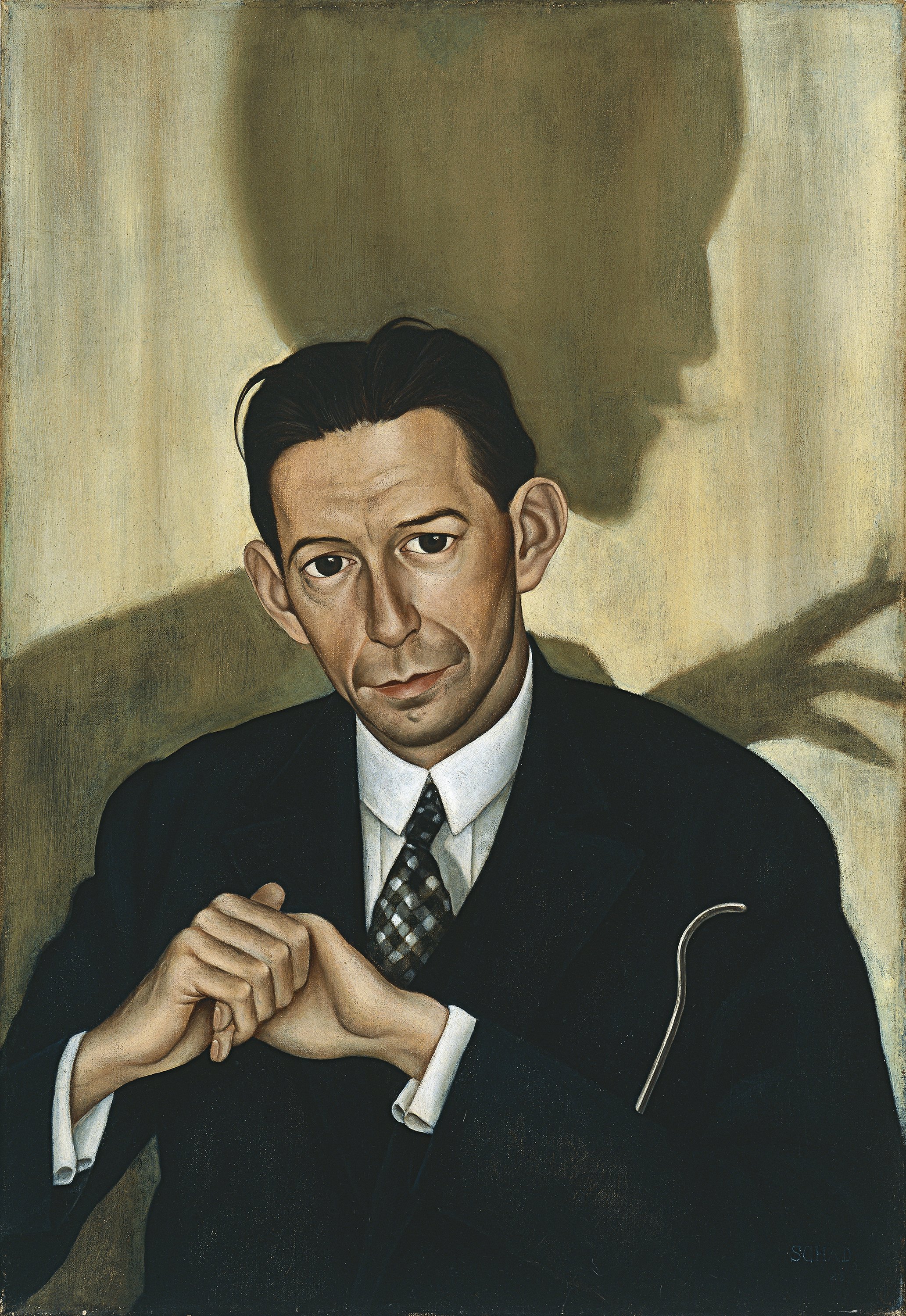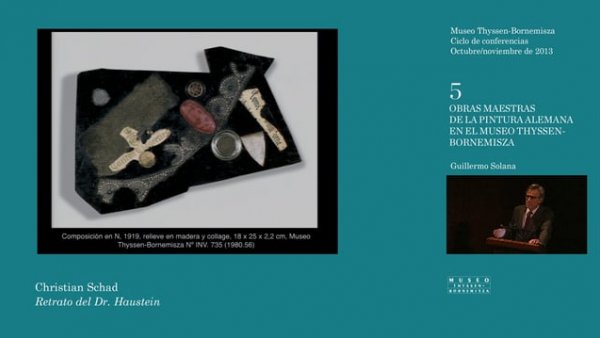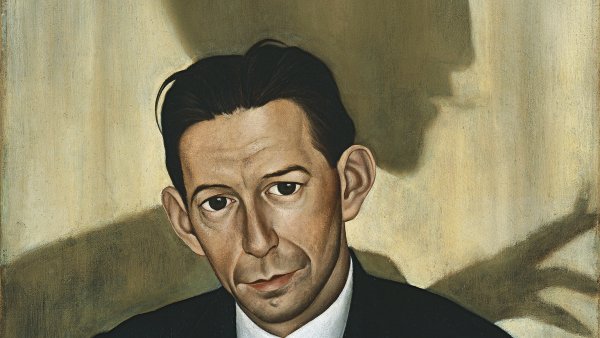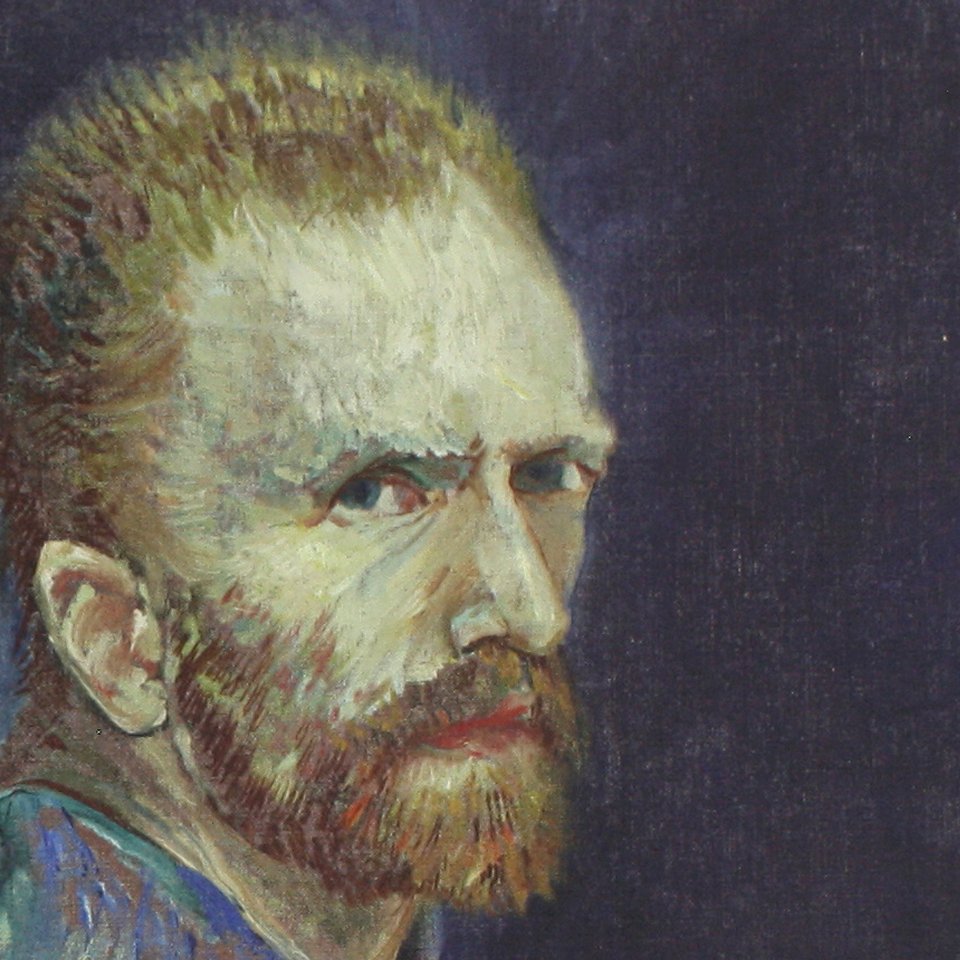Portrait of Dr. Haustein
During his mature period Christian Schad concentrated almost exclusively on the portrait genre. The Portrait of Dr Haustein, painted in Berlin in 1928, is a powerful image of the prestigious Jewish dermatologist who specialised in venereal diseases. On arriving in the German capital in 1928, Schad was introduced by his journalist friend Felix Bryk to the famous political and literary salon of the Hausteins, which had become a prestigious gathering place for the most prominent figures of the time and was remembered by the painter for its “extreme intellectual and erotic licence, typical of 1920s Berlin.”
Rendered with minute brushwork that denotes the influence of Raphael’s style, in this unsettling portrait Hans Haustein is shown holding one of the instruments of his trade against his chest, a detail which, although seemingly insignificant, plays a very special role and adds a note of mystery that immediately attracts the viewer’s attention. The sitter occupies the lower half of the composition in order to leave room for a mysterious shadow that is not his, projected on the wall in the background of the painting. According to Schad, this shadow of a smoking female figure, which recalls the shadows in Expressionist films, belonged to Sonja, a model with whom Haustein had fallen in love. In view of later events, the shadow painted by Schad can be considered a premonition of the grim and tragic future of the Hausteins. Haustein’s unfaithfulness eventually drove his wife Friedel to suicide and he himself also took his own life with cyanide after hearing that he was about to be arrested by the Gestapo in 1933.
Paloma Alarcó

















